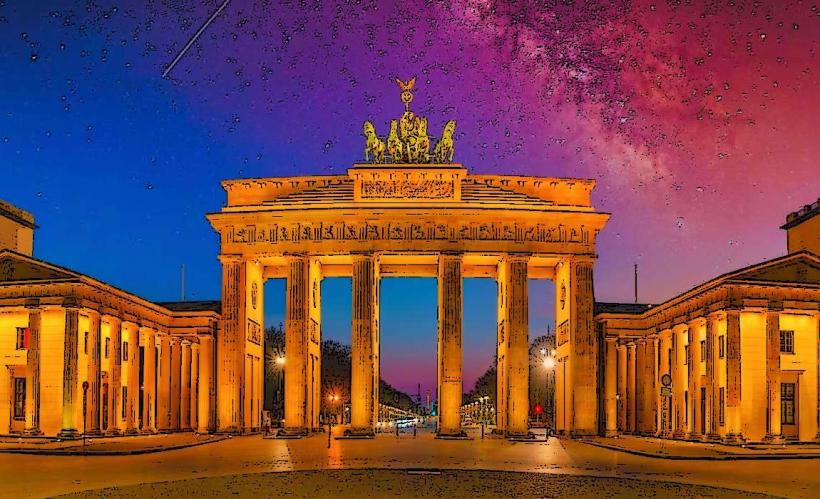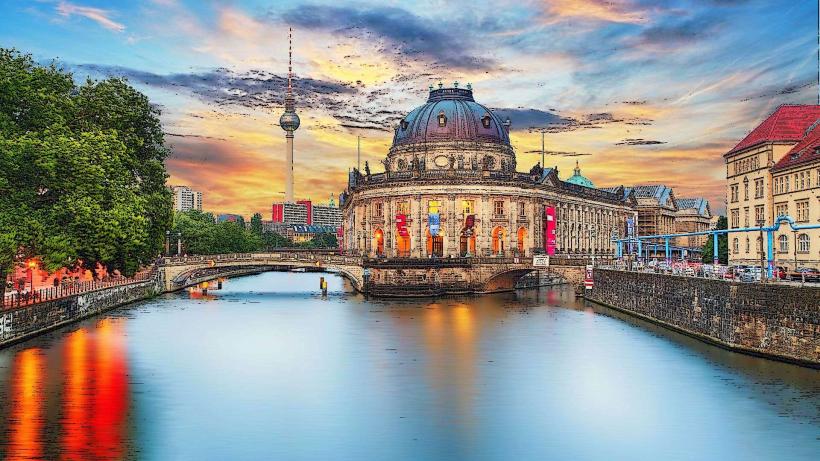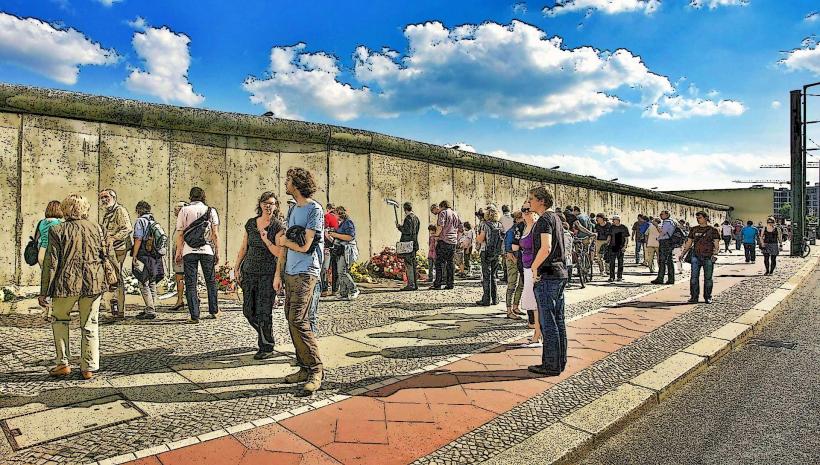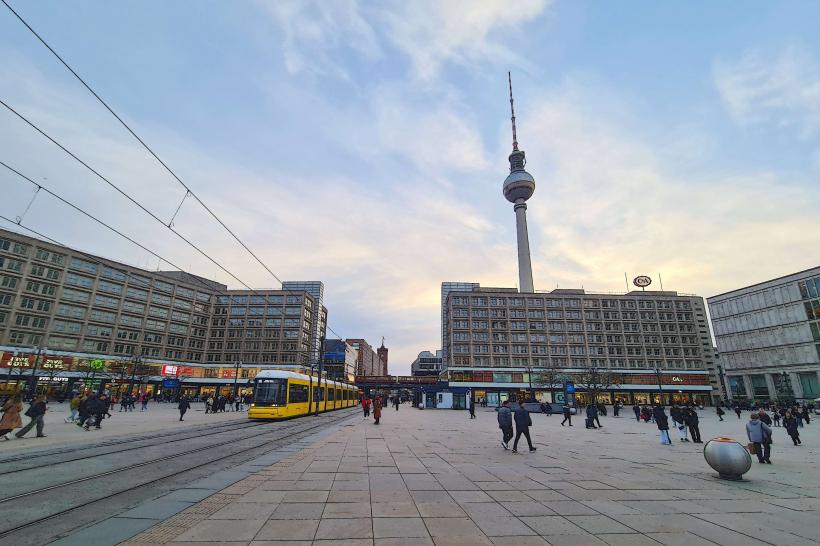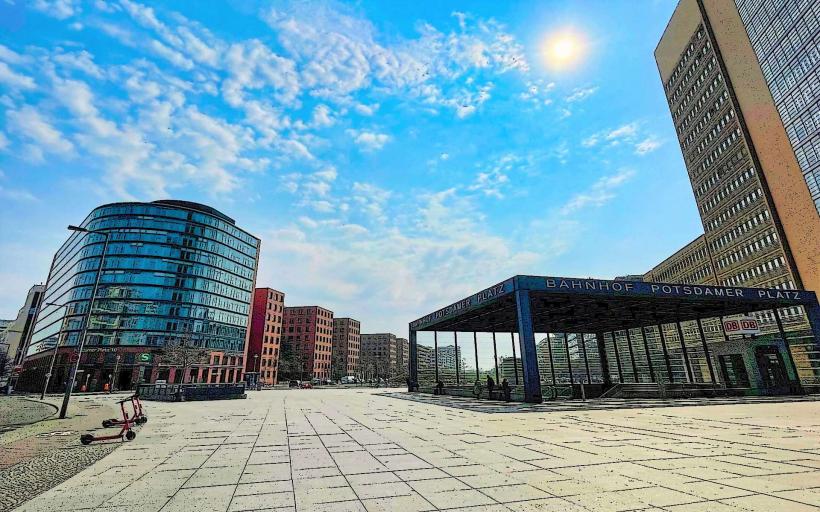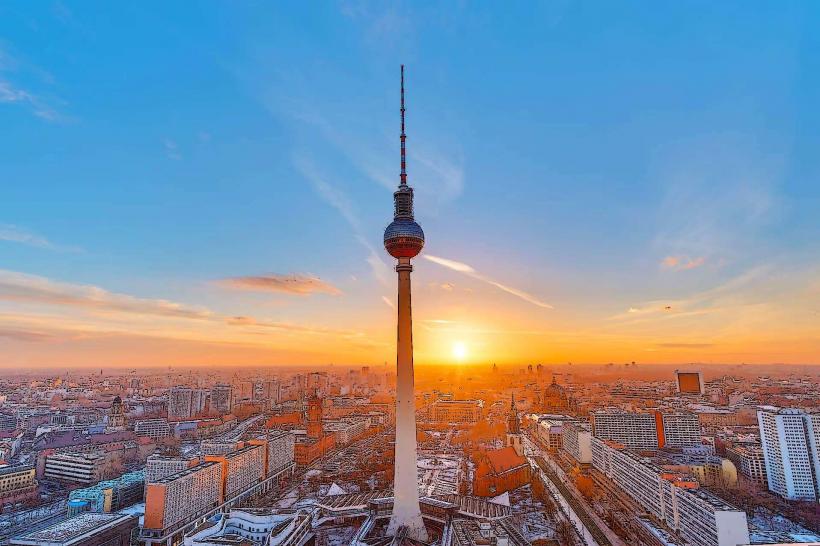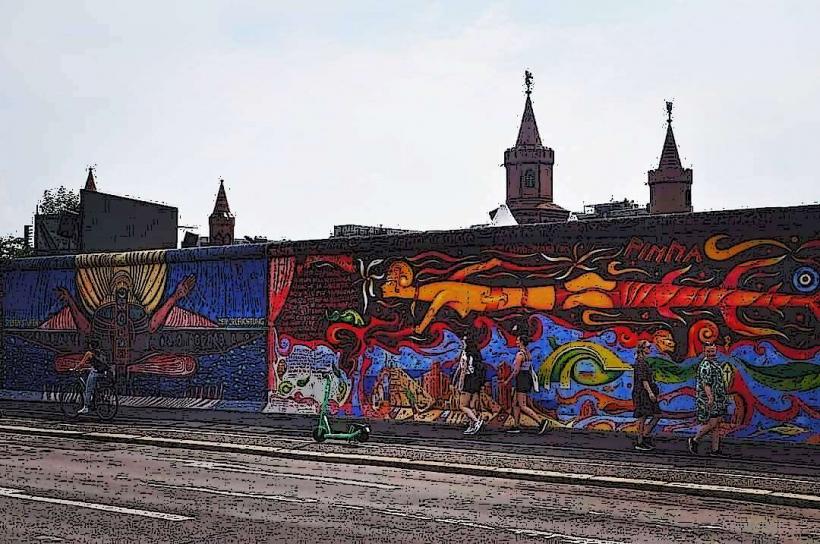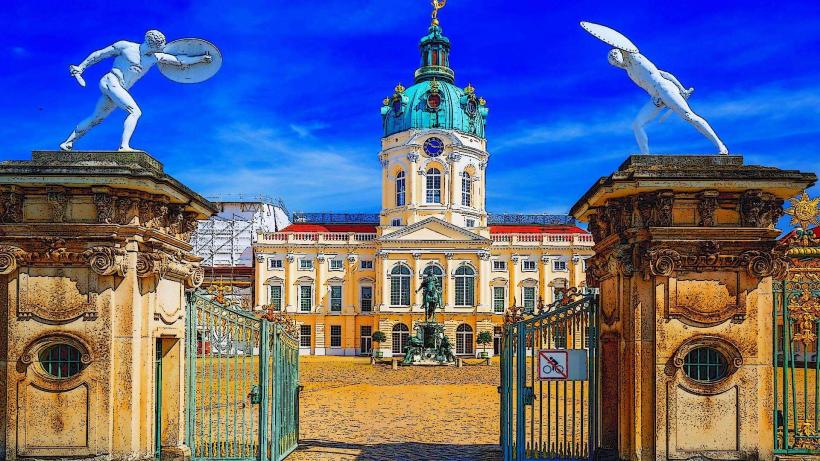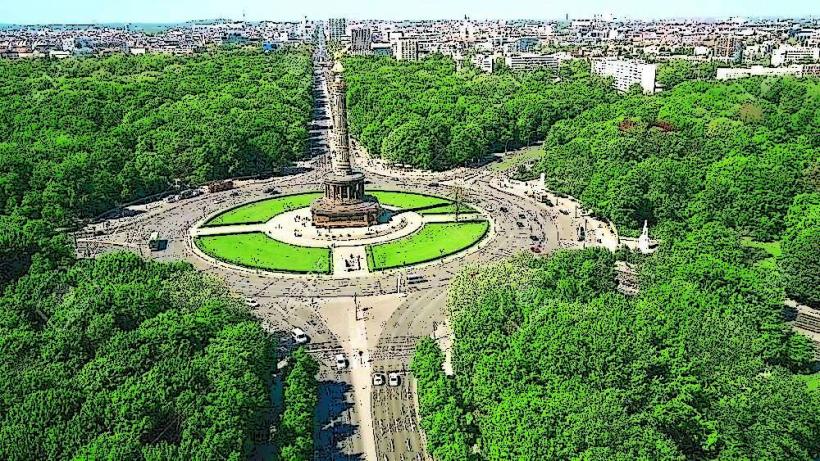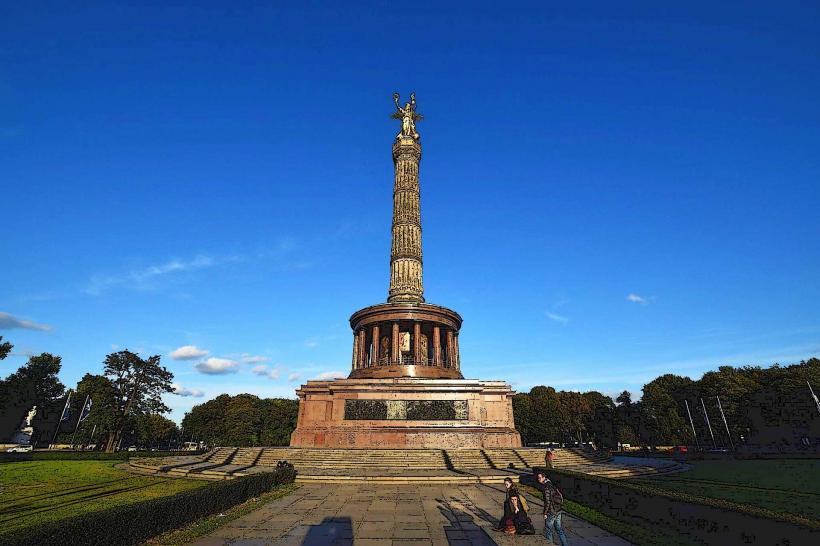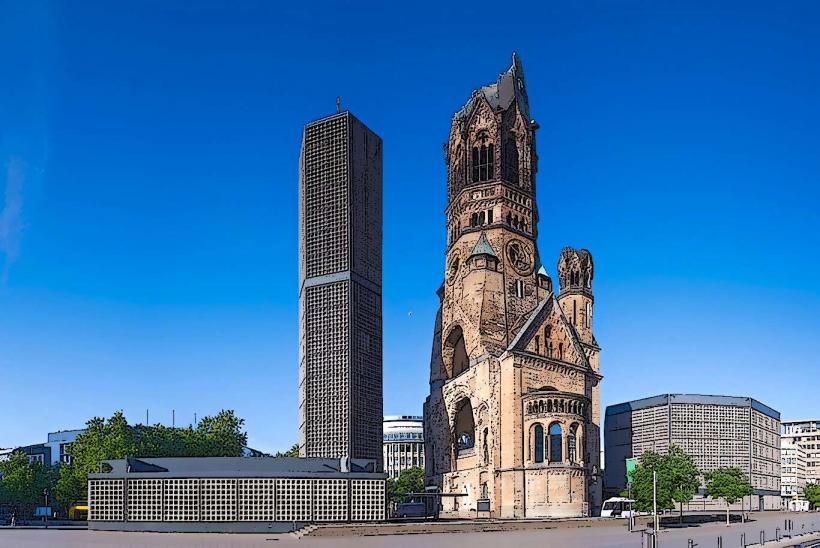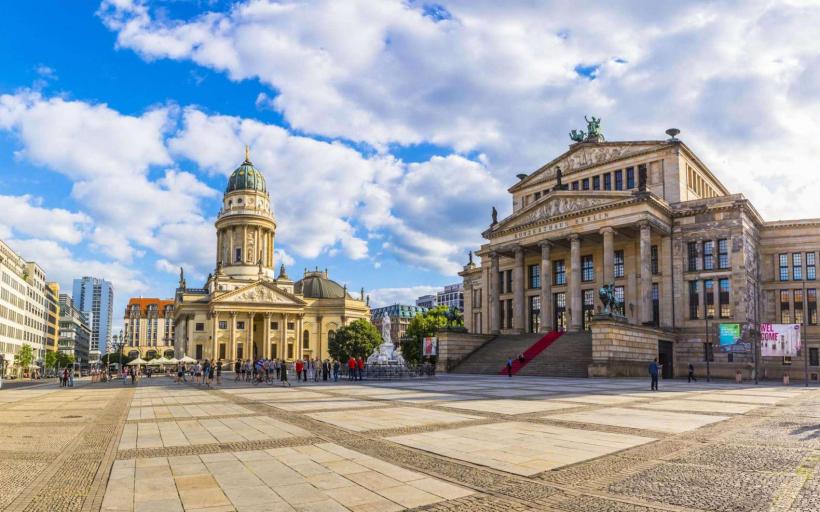Information
Landmark: Berlin CathedralCity: Berlin
Country: Germany
Continent: Europe
The Berlin Cathedral (Berliner Dom) is one of the most iconic and impressive landmarks in Berlin, known for its stunning architecture, rich history, and central role in the religious and cultural life of the city. Located on Museum Island in the heart of Berlin, the cathedral has undergone significant transformations over the centuries, serving not only as a place of worship but also as a symbol of the city’s resilience and cultural heritage.
1. Historical Background
- Early History: The site of the Berlin Cathedral has a long history dating back to the 15th century. A church was first built here in 1465, known as the Berlin City Palace Chapel. Over time, the church expanded and evolved into a larger and more elaborate structure.
- Construction of the Current Cathedral: The current Berlin Cathedral was commissioned by King Frederick William II of Prussia in the late 19th century. Construction began in 1894 under the direction of architect Julius Raschdorff. The cathedral was completed in 1905 and was designed in the Baroque Revival style, with influences from the Renaissance and earlier Baroque periods.
- Symbol of the Hohenzollern Dynasty: The Berlin Cathedral has strong connections to the Hohenzollern dynasty, the royal family of Prussia and later the German Empire. It was intended as the royal church of the Hohenzollerns, and many members of the family are buried in the cathedral’s crypt.
2. Architectural Features
- Baroque Revival Style: The Berlin Cathedral is a stunning example of Baroque Revival architecture, which incorporates dramatic and ornate elements. The structure features grand domes, massive columns, and intricate carvings that reflect the wealth and power of the Prussian state at the time of its construction.
- The Dome: One of the most striking features of the Berlin Cathedral is its large central dome, which is one of the biggest in Germany. The dome stands at an impressive height of 98 meters (322 feet) and is topped with a golden orb and cross. The interior of the dome is adorned with beautiful frescoes depicting religious scenes and angels, painted by Otto Menne.
- Nave and Interior: Inside the cathedral, visitors are greeted by the grandeur of the nave, which is flanked by tall columns. The main altar, surrounded by intricate woodwork and stone carvings, is located beneath the central dome. The cathedral is richly decorated, with a mix of marble, gold leaf, and stained glass.
- Organ: The Berlin Cathedral is home to one of the largest and most famous organs in Germany, the Sauer Organ, which was installed in 1905. It is a significant feature of the cathedral and is often used for concerts and religious services. The organ is noted for its powerful sound and historical importance.
- Crypt: The Berlin Cathedral has a remarkable crypt beneath the main floor, which houses the tombs of several members of the Hohenzollern family, as well as notable figures from the history of Berlin and Prussia.
3. Significance and Role
- Religious and Cultural Importance: The Berlin Cathedral is not only an important religious building but also a significant cultural landmark in the city. It serves as the mother church of the Evangelical Church in Berlin-Brandenburg-Silesian Upper Lusatia and is a center for Protestant worship in Berlin. Regular church services, concerts, and events are held here, attracting both locals and tourists alike.
- Political Symbolism: The Berlin Cathedral has also served as a symbol of Berlin’s political history. During the Cold War, it was located in East Berlin, a city divided between East and West. Despite the division, the cathedral remained a place of peace, worship, and sometimes political activism, with significant church leaders speaking out for human rights and reunification.
4. Restoration and Renovation
- Damage During World War II: During World War II, the Berlin Cathedral suffered significant damage from Allied bombing raids, particularly in 1944. The dome was heavily damaged, and much of the interior was destroyed. After the war, the cathedral was left in ruins for several years.
- Post-War Restoration: After the war, the cathedral was restored in stages. The most significant restoration efforts took place during the 1950s and 1960s, but it was not until the 1990s, after the fall of the Berlin Wall and the reunification of Germany, that the restoration work was fully completed. The dome and the interior were meticulously rebuilt, and the cathedral was re-dedicated as a symbol of unity and resilience.
- Modern Enhancements: In the 1990s and 2000s, additional restoration work was carried out, and the Berlin Cathedral was modernized in various ways. The crypt and several chapels were restored, and modern lighting and sound systems were added to enhance the experience for visitors.
5. Visiting the Berlin Cathedral
- The Dome and Panoramic Views: One of the main attractions of the Berlin Cathedral is the dome, which visitors can access via a staircase. From the dome, you can enjoy breathtaking panoramic views of the city, including sights such as Museum Island, the Brandenburg Gate, the Berlin TV Tower, and the Spree River. The view from the top is particularly spectacular at sunset or during special events.
- Exhibitions and Museums: Inside the cathedral, there are permanent exhibitions that showcase the building’s history, religious art, and the history of Berlin. These exhibitions provide deeper insight into the cathedral’s construction, the Hohenzollern dynasty, and the city’s evolution over time. The crypt also serves as a historical site where visitors can see the tombs of key figures from the past.
- Concerts and Events: The cathedral is renowned for its exceptional acoustics, and many musical events take place throughout the year, including organ concerts, choir performances, and classical music events. The cathedral’s annual Christmas services are particularly famous, attracting large crowds of worshippers and visitors.
6. Nearby Attractions
- Museum Island: The Berlin Cathedral is located on Museum Island, a UNESCO World Heritage site that is home to several of Berlin’s most important museums. Notable museums on Museum Island include the Pergamon Museum, the Altes Museum, and the Bode Museum. Visitors can easily explore these cultural institutions alongside the Berlin Cathedral.
- Berlin Palace: Directly across from the Berlin Cathedral is the Berlin Palace (Berliner Schloss), which is currently being rebuilt and will serve as the Humboldt Forum, a cultural and exhibition center.
- Berlin's Unter den Linden Boulevard: A short walk from the cathedral is Unter den Linden, one of Berlin’s most famous streets, lined with historic buildings, shops, and cultural institutions. The Brandenburg Gate and the Reichstag Building are also nearby.
- Altes Museum and Pergamon Museum: Museum Island is also home to the Altes Museum and the Pergamon Museum, both of which house extensive collections of ancient artifacts, classical art, and archaeological finds from throughout history.
7. Conclusion
The Berlin Cathedral stands as a testament to both the artistic grandeur of the Baroque Revival period and the resilience of Berlin’s people through times of war and division. Its striking architecture, historical significance, and spiritual importance make it one of the most important landmarks in the city. Whether you are drawn to its architectural beauty, its historical importance, or the stunning views it offers of Berlin, the Berlin Cathedral provides a rich and unforgettable experience for visitors. Its ongoing role as a place of worship, a center for culture, and a symbol of unity continues to make it a vital part of Berlin’s identity.

